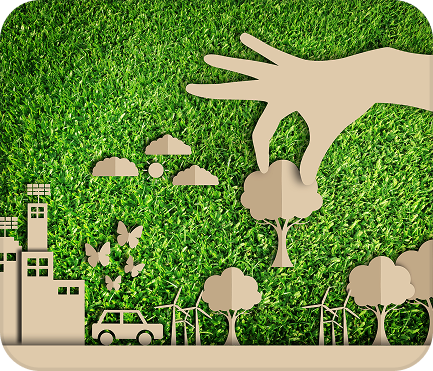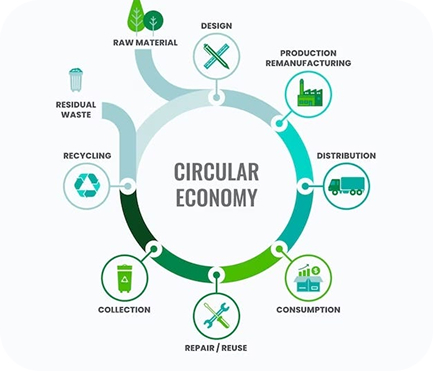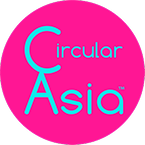Circular Design


Circular Design
Circular design is not just about the product but also encompasses the entire system, including the business model, which shifts from selling products to providing services and experiences. It’s a holistic approach that considers the environmental impact of a product from the extraction of raw materials to its end-of-life disposal.
Circular design is a framework that tackles global challenges including climate change, biodiversity loss, waste, and pollution. Design is an essential element of developing a circular economy that manages our finite resources and enables us to live within the planetary boundaries.
Design for the Circular Rs
In a circular economy model, every circle returns to an earlier point in the product life cycle, which is effectively the reuse of a product, component or material. Direct reuse by reselling/redistributing where a product is used for the same purpose without any changes becomes part of the business model and not of product design. However, such a business model will make the longevity of products more attractive.
The return of a used product to at least its original performance with a warranty that is equivalent to or better than the newly manufactured products. The practice is a comprehensive process of restoring activities (mainly under the test, inspection, full disassembly, refurbishment, part replacement, clean and reassembly).


Circular Design for Consumers
Circular products that are part of an integrated business model focusing on the delivery of performance or function may be a better value proposition for many customers. Competition is based on the creation of added service value of a product, not solely on its sales or price value.
A product’s value in terms of robustness and performance that is maintained over time and with fair use. Quality has a broader meaning beyond the word description from a customer’s perspective. The quality of a product is associated with the variability of functionality based on product features and performances. The design lasts over time as styles and colours are classical, and the materials age well.
Circular Design for Business
A business model based on industrial symbiosis in which the residual outputs from one process can be used as feedstock for another process. Those business models that enable increased utilisation rates of products by making possible shared use/access/ownership.
A business model based on recovering the resource value of materials and resources to be used in new forms of value. Those business models based on offering product access and retaining ownership to internalise the benefits of circular resource productivity. This strategy refers to design aimed at enabling the longer circulation of materials and resources in multiple cycles.


